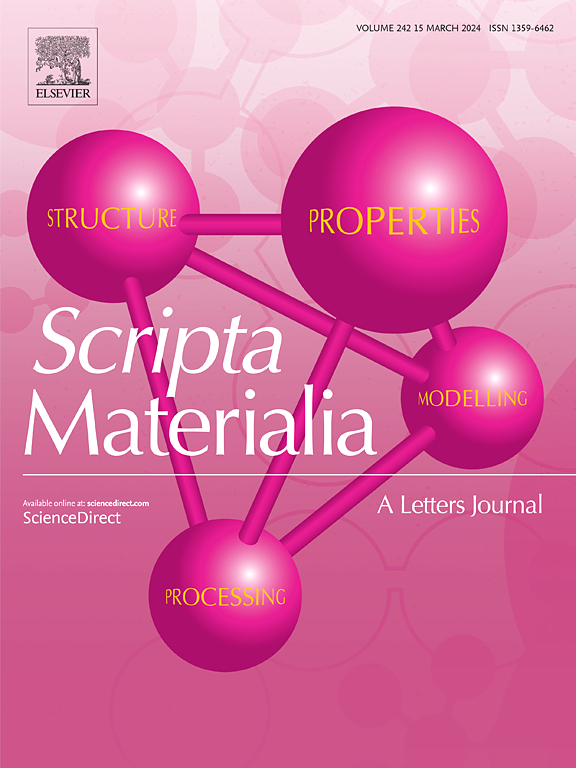Revealing deformation mechanism of fine-grained Mg alloys via in-situ neutron diffraction analysis
IF 5.6
2区 材料科学
Q2 MATERIALS SCIENCE, MULTIDISCIPLINARY
引用次数: 0
Abstract
Deformation mechanism at room-temperature of fine-grained Pure Mg, AZ31 and Mg-Mn alloys is examined through in-situ neutron diffraction method and postmortem microstructural observations. Extension twins do not form in any of the specimens. In the AZ31 alloy, lattice strain and integrated intensity of individual planes change differently with progression of tensile tests, indicating large plastic anisotropy. This is due to large number of dislocation slips on not only basal but also prismatic planes. Whereas, Pure Mg and Mg-Mn alloy show a small difference in lattice strain and integrated intensity between diffraction peaks, because grain boundary sliding plays a role in relaxation of stress accumulations at grain boundaries, with less dependence on crystallographic orientation. Neutron diffraction analysis in Pure Mg and Mg-Mn alloy reveals that dislocation slips (on mainly basal plane) are generated by mechanisms associated with both accommodation process for grain boundary sliding and general intragranular plastic deformation.

原位中子衍射分析揭示了细晶镁合金的变形机理
采用原位中子衍射法和死后显微组织观察,研究了细晶纯Mg、AZ31和Mg- mn合金的室温变形机理。在任何样品中都不形成延伸孪晶。在AZ31合金中,随着拉伸试验的进行,各面晶格应变和综合强度变化不同,表明塑性各向异性较大。这是由于大量的位错滑移不仅在基面,而且在棱柱面。而纯Mg和Mg- mn合金的晶格应变和衍射峰间的积分强度差异较小,这是因为晶界滑动对晶界应力积累的松弛起作用,而对晶体取向的依赖较小。纯Mg和Mg- mn合金的中子衍射分析表明,位错滑移(主要发生在基面上)是由晶界滑移的调节过程和一般的晶内塑性变形共同作用的机制产生的。
本文章由计算机程序翻译,如有差异,请以英文原文为准。
求助全文
约1分钟内获得全文
求助全文
来源期刊

Scripta Materialia
工程技术-材料科学:综合
CiteScore
11.40
自引率
5.00%
发文量
581
审稿时长
34 days
期刊介绍:
Scripta Materialia is a LETTERS journal of Acta Materialia, providing a forum for the rapid publication of short communications on the relationship between the structure and the properties of inorganic materials. The emphasis is on originality rather than incremental research. Short reports on the development of materials with novel or substantially improved properties are also welcomed. Emphasis is on either the functional or mechanical behavior of metals, ceramics and semiconductors at all length scales.
 求助内容:
求助内容: 应助结果提醒方式:
应助结果提醒方式:


